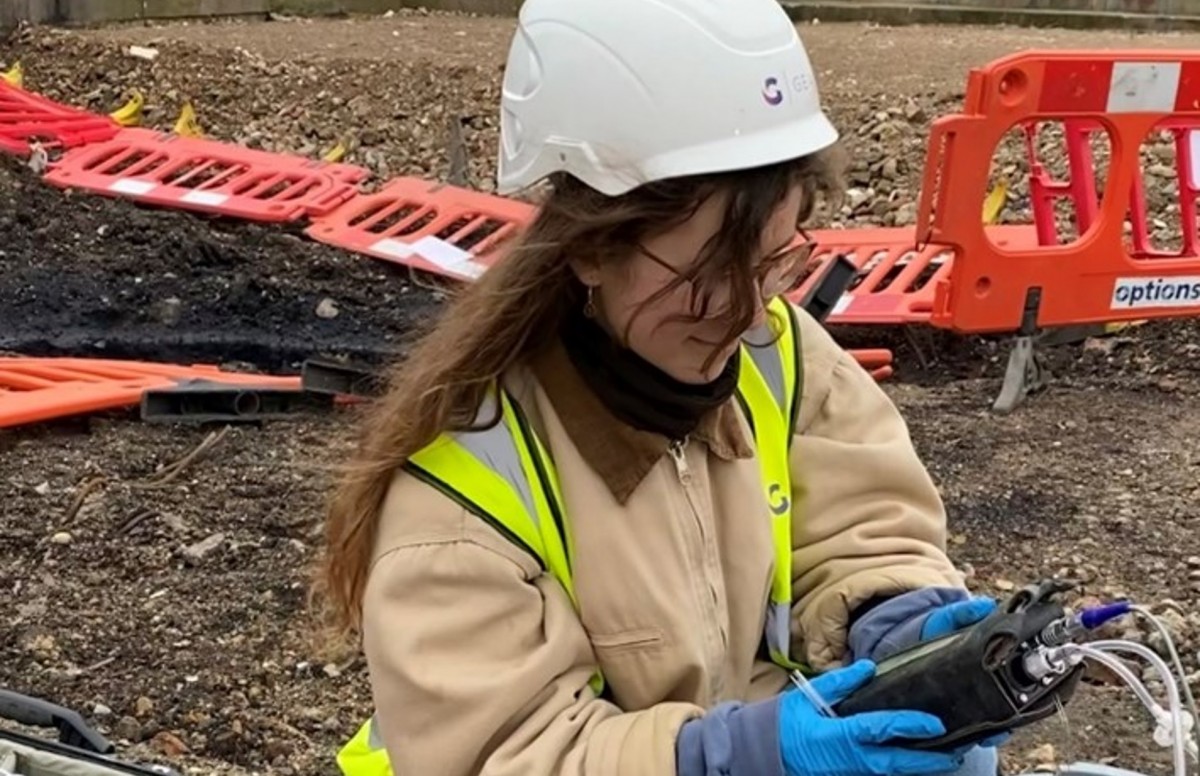7 Simple Techniques For Geotheta
7 Simple Techniques For Geotheta
Blog Article
The Main Principles Of Geotheta
Table of ContentsThe Geotheta IdeasFascination About GeothetaSome Known Facts About Geotheta.The Greatest Guide To Geotheta
They collaborate with civil engineers, structural engineers, architects, and various other specialists to incorporate geotechnical considerations into the overall task layout and building and construction process. This requires effective teamwork, coordination, and communication to guarantee that the geotechnical elements straighten with the task objectives and satisfy governing needs.Mining & Products Engineering: Concepts of boring, penetration rates, and factors affecting the choice of exploration method. Attributes of nitroglycerins, firing systems and blast patterns. Blowing up strategies in surface and below ground functions. Unique blowing up methods at excavation perimeters. Resonance and noise control. Mechanical and continual strategies to fragmentation, consisting of longwall shearing and fullface boring.
Integrated analysis of fragmentation and comminution procedures. Offered by: Mining & Materials Design.
Examine This Report on Geotheta
Bachelor's degree programs in civil, geotechnical, geological, and ecological engineering typically last 4 years and include basic education and learning programs in English, social scientific research, and the humanities, in addition to courses in innovative maths, structural geology, and liquid mineralogy. (https://packersmovers.activeboard.com/t67151553/how-to-connect-canon-mg3620-printer-to-computer/?ts=1722609175&direction=prev&page=last#lastPostAnchor)
Geotechnical engineering entails the evaluation of the soil and rock problems at a certain site, and their ramifications for the growth of that site. As most structures rely upon the ground for support, it lacks surprise that a thorough understanding of the ground conditions, and the suitability of structure systems, are vital to the long-lasting security and efficiency of the building or structure.
Being experts in the investigation of geological formations and ground practices, geotechnical designers do clinical examinations and testing to recognize the influence these geological developments might carry the design and construction of building, civil and facilities projects. This know-how is crucial for the layout and building and construction of buildings, roads, tunnels, dams, bridges, and water supply and sewage systems.
The geotechnical team at Douglas Partners regularly speak with engineers, design engineers, designers, and building contractors to make referrals on layout and growth proposals to make certain that the built structures are suitably created for the ground problems. The style of footing systems needs to take into consideration the weight of the framework, the capability of the ground to support that weight together with movement tolerances and efficient construction.
The Buzz on Geotheta
This task is greatly simplified by the use our Douglas Map geospatial platform that makes this details conveniently available in an easy to utilize internet browser user interface. A geotechnical engineer will certainly guide the boring of boreholes and test pits to collect soil and various other samples, and likewise examine surface area features and ground exposures to create a geotechnical version of the subsurface conditions.
Depending on the project kind and ground problems came across, laboratory testing may to name a few points assess toughness, compressibility, reactivity and/or permeability of dirt and rock examples. Hereafter data is gathered and collected, the results are utilized for a geotechnical model of the site, which is typically presented as areas throughout the site.

A geotechnical investigation naturally can just evaluate the ground conditions at the locations drilled or excavated. Natural variations in dirt and rock problems can take place across a site and in between examination places. It is consequently excellent practice that the geotechnical designer be preserved throughout construction of the job to give on-site verification that the ground problems run into are constant with the assumptions and recommendations provided in the geotechnical examination report.
The 8-Second Trick For Geotheta
Geotechnical designers utilize their extensive knowledge of dirt and rock to assess risk and resolve troubles on diverse framework projectsGeotechnical design is a specialist branch of civil engineering which checks out the behavior of earth products and the application of dirt and rock auto mechanics. Geotechnical Engineers. As a geotechnical engineer, you will evaluate the physical, mechanical and chemical residential or commercial properties of dirt and rock in order to create structures, maintaining structures and earthworks
Geotechnical engineering is very closely connected to and overlaps with, both design geology and ground engineering - https://geotheta.wordpress.com/2024/08/02/unlocking-the-secrets-of-geotechnical-engineers-the-geotheta-advantage/. It's possible to specialise in geotechnics or job for a geotechnical company yet be called a design rock hound or a ground engineer. As a geotechnical designer, you'll need to: develop and maintain partnerships with customers and various other specialists associated with the site, throughout each projectmaintain security criteria on site be mindful of expense implications when you make recommendationsstudy geological maps and airborne photos from a variety of resources and from various time periodsexamine building and construction intends to see how feasible they are based upon your understanding of the siteinvestigate dangers or geological dangers for the sitesearch for ecologically sensitive attributes, such as land fill begin to develop accurate and expository ground modelsplan field investigationsdrill and evaluate samples of bedrock, soil, groundwater and added materials oversee other specialists on sitesolve technological issues as they arise, such as unanticipated structures at drill sitesmonitor conditions throughout and after building to see to it structures are steady in the brief and long termadding data gathered on website to your first researchcreating geotechnical calculations, drawings, and two or three-dimensional computer system designs analyzing the datamaking suggestions concerning the suggested use the site

Report this page